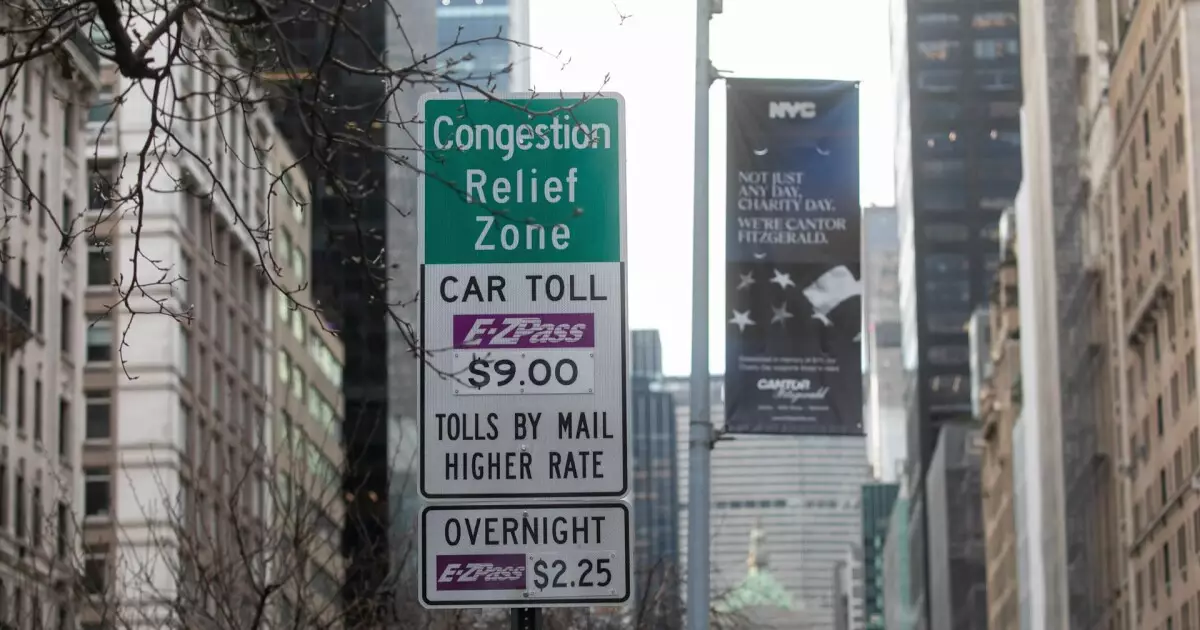In early January, New York City initiated its long-anticipated congestion pricing program, a scheme designed to alleviate traffic congestion while generating funds for much-needed infrastructure improvements. However, just weeks later, this groundbreaking program faced an unexpected setback when the Trump administration terminated federal approval, ushering in a wave of legal and political turmoil. This critical examination seeks to unravel the intricate dynamics of the program, the motivations behind its abrupt termination, and its implications for New York City’s transportation future.
New York City’s congestion pricing initiative is significant as it positions the city as the first in the United States to impose fees on drivers entering a congested zone, specifically Manhattan. The premise is straightforward: by charging drivers a $9 toll for entering areas south of 60th Street, the city aims to manage congestion levels while simultaneously generating about $15 billion in revenue for the Metropolitan Transportation Authority (MTA). Originally proposed in 2007 by former Mayor Michael Bloomberg, the plan has endured extensive delays and legal challenges, only to be resurrected by Governor Kathy Hochul in November.
Despite its noble objectives, the program has not been without controversy. Critics, including Transportation Secretary Sean Duffy, lambasted it as an affront to working-class Americans and small business owners. Duffy raised concerns that it unfairly penalizes commuters who have already contributed through gas taxes and other levies to finance highway construction and maintenance. This sentiment underscores a larger debate about fairness and equity in urban transport policy, especially in a city that thrives on its diverse socioeconomic fabric.
The termination of the congestion pricing program approval serves as a reflection of the fraught relationship between urban policy initiatives and political constraints. Duffy’s critique outlines a fundamental ideological divide: on one side, advocates of congestion pricing perceive it as a necessary evolution in urban transport, while critics view it through the lens of taxation and entitlement. The crux of Duffy’s argument lies in the belief that the program misallocates toll revenues primarily for transit system improvements rather than strictly for congestion mitigation—a viewpoint that resonates with certain factions of the electorate.
The political undercurrents are even more pronounced when considering how quickly the MTA moved to challenge the federal decision in court. MTA Chair and CEO Janno Lieber characterized the program as “highly successful,” emphasizing its contributions to improved travel times and reduced congestion levels. This highlights the degree to which local leaders are ready to defend their policy frameworks in the face of federal opposition, further complicating the already multifaceted dialogue around transportation finance and usage.
Beyond the political landscape, the economic implications of scrapping the congestion pricing approval are tangible. The MTA’s anticipated $15 billion in revenue was earmarked for vital infrastructure projects, including repairs and upgrades to the arching subway and transit systems that service millions of New Yorkers daily. The potential loss of funding could hinder public transportation improvements and possibly lead to fare hikes or service reductions, creating a ripple effect felt by the very constituents that opponents argue the program will hurt.
Public sentiment on this issue is divided. While some drivers express frustration over additional charges, the broader public—especially those who rely on public transit—may view congestion pricing as a necessary sacrifice for improved infrastructure and reduced traffic. This dichotomy represents a classic urban challenge: balancing the immediate interests of individual commuters with the long-term needs of an entire city.
As the MTA battles to keep congestion pricing alive, it is clear that New York City’s transportation policies are caught in a web of political, economic, and social complexities. The outcome of this confrontation between local initiatives and federal decisions will not only shape the trajectory of New York’s transit landscape but will also set a precedent for urban transport policies across the United States. The dialogue surrounding congestion pricing encapsulates a broader question of how urban areas can sustainably thrive amidst growing populations and traffic demands. Whether the program can endure remains to be seen, but its implications will resonate through the decades to come as cities grapple with similar challenges nationwide.

